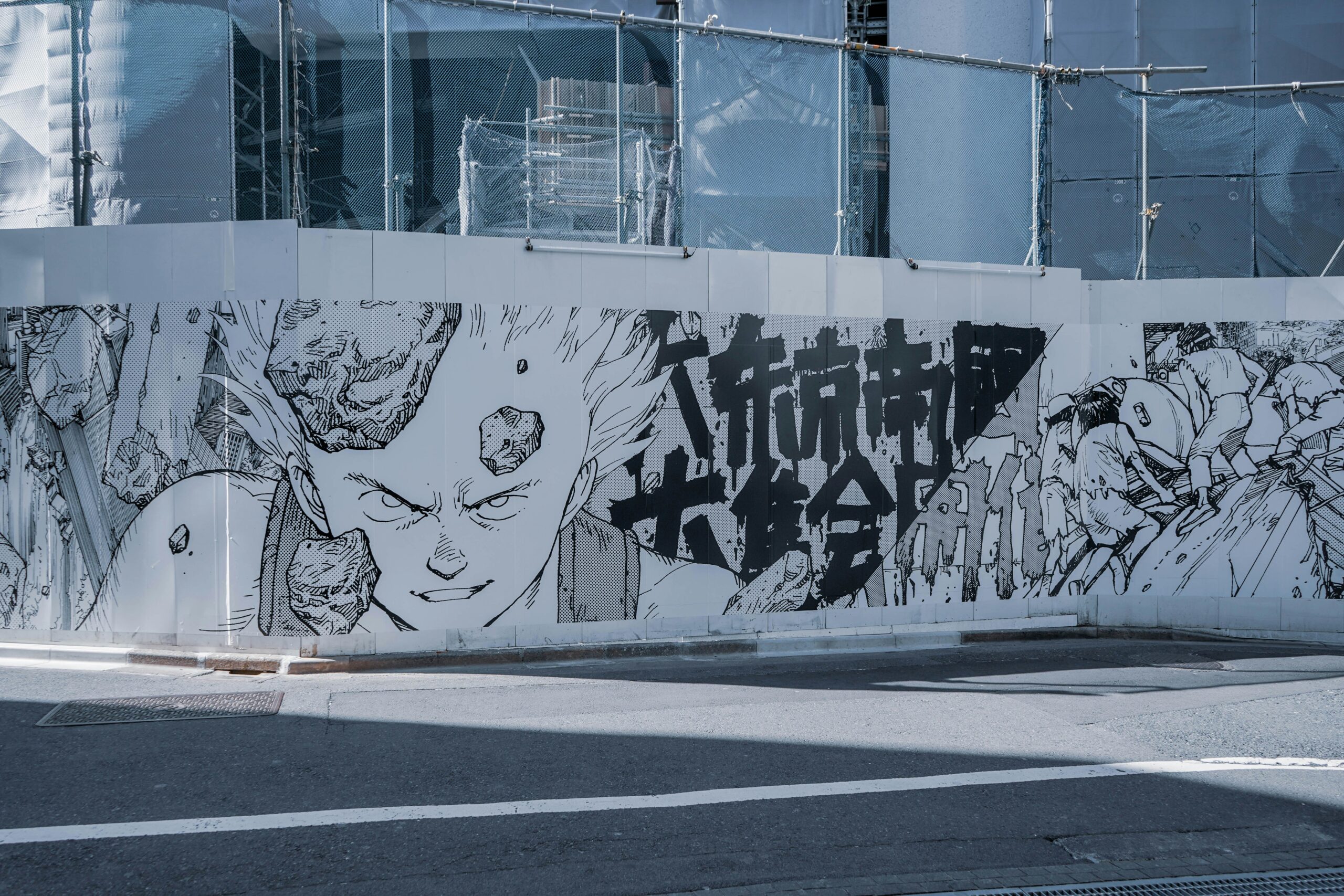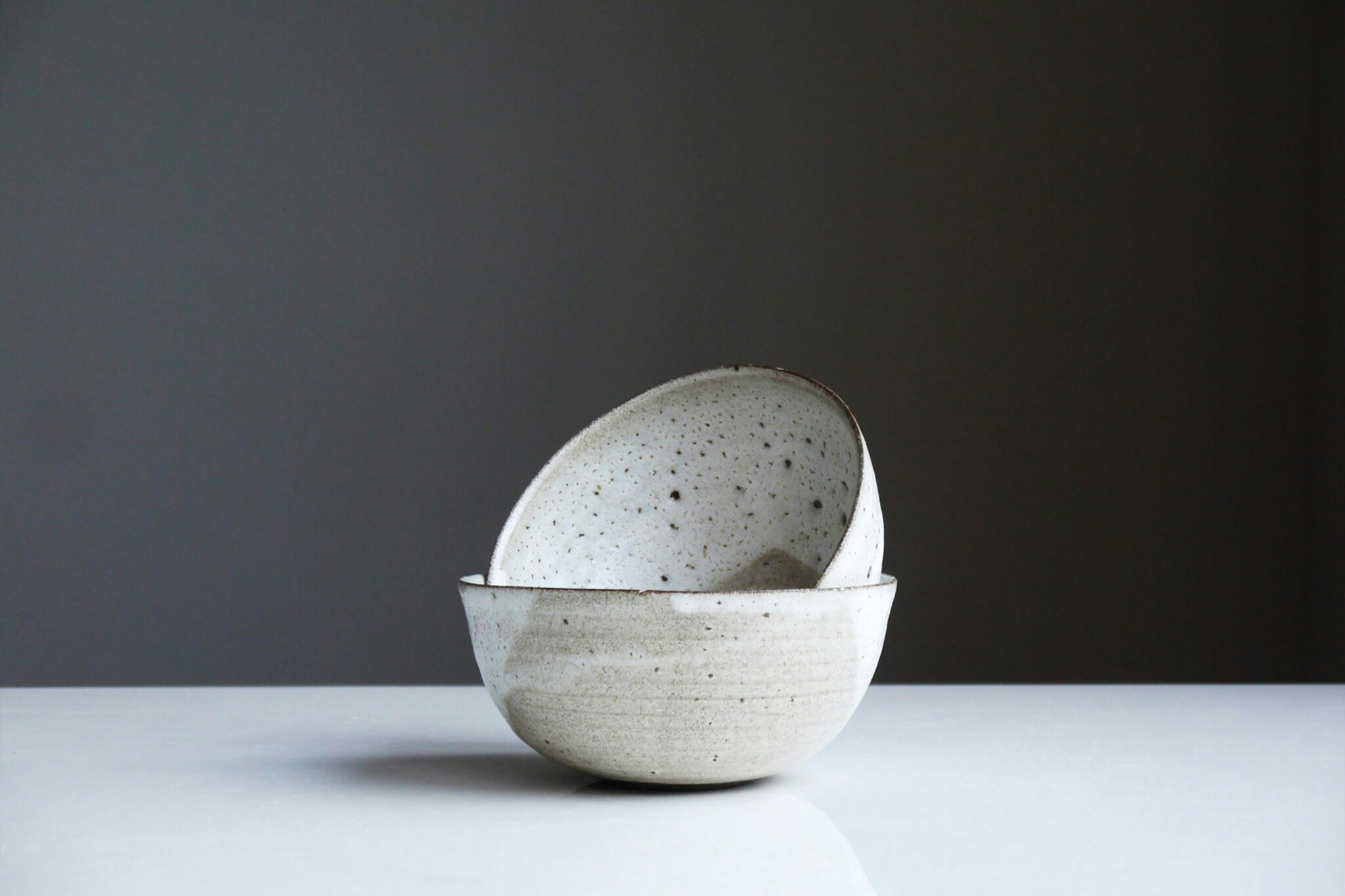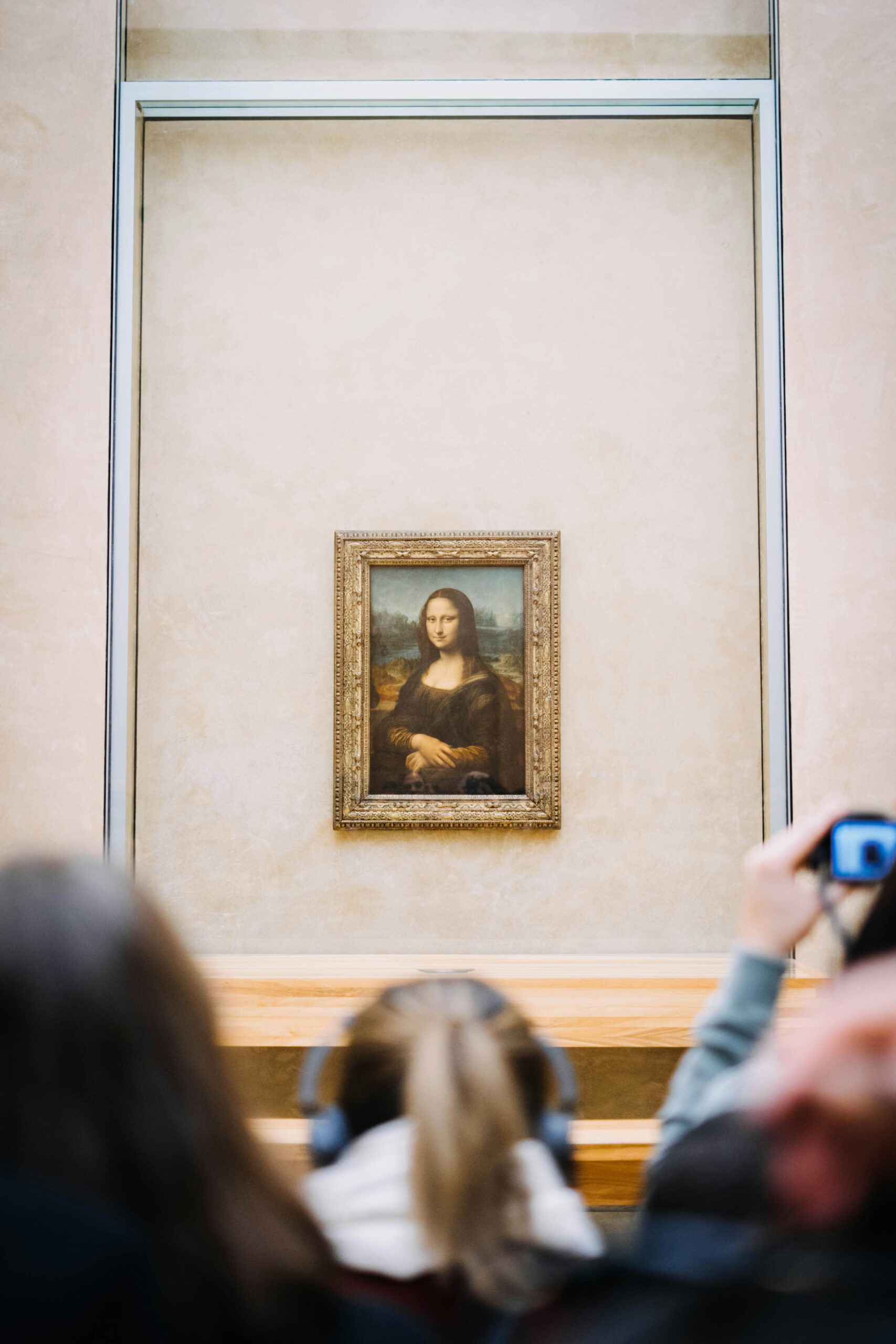Sakeharasu has gained popularity as an illustrator for his meticulous works that feel like snapshots from a high school girl’s everyday life. With “travel” as his guiding theme, he continues to seek new forms of expression and ways of sharing his art. This interview offers a glimpse into his sincerity and creative journey.
Enjoying Adversity — An Illustration Path That Began at an Izakaya
Thank you for speaking with us today. Your illustrations blend scenery and characters in a way that makes viewers feel as if they’re being taken on a little journey. Could you share how you first came to work as an illustrator?
Sakeharasu(Sake) – Thank you. My path into illustration actually began at an izakaya. In the wake of the Lehman Shock, many companies were scaling back on hiring new graduates, and I was caught up in that. The job offer I had lined up was suddenly withdrawn, and just as I was wondering what to do next, I came across a posting for a designer at an izakaya.
It’s not every day you hear of an izakaya hiring a designer!
Sake – That’s right. I thought it sounded fun, so I took the job. At first, I was designing menus and logos for the izakaya, and even drawing portraits of the staff. Before long, I found myself fascinated by illustration. Eventually, I took a leap of faith—quit the job, and enrolled in an illustration school in Kyoto. After graduating, I stayed on as an instructor there, and later worked with game companies I had connections with, creating characters and backgrounds. Finally, in 2019, I struck out on my own as a freelancer.
I’ve looked through some of your illustration guides—they’re put together so clearly. Knowing you once taught as an instructor, it all makes perfect sense.
Sake – I learned so much from teaching as well. It was fascinating to see what my students were interested in, what trends they were following, and the tools they were using—many of which simply didn’t exist when I was their age. Some even gave me handmade gifts, like an original pin badge and a plush mallard character. That mallard is especially precious to me—it’s the same one I use as my social media icon today.
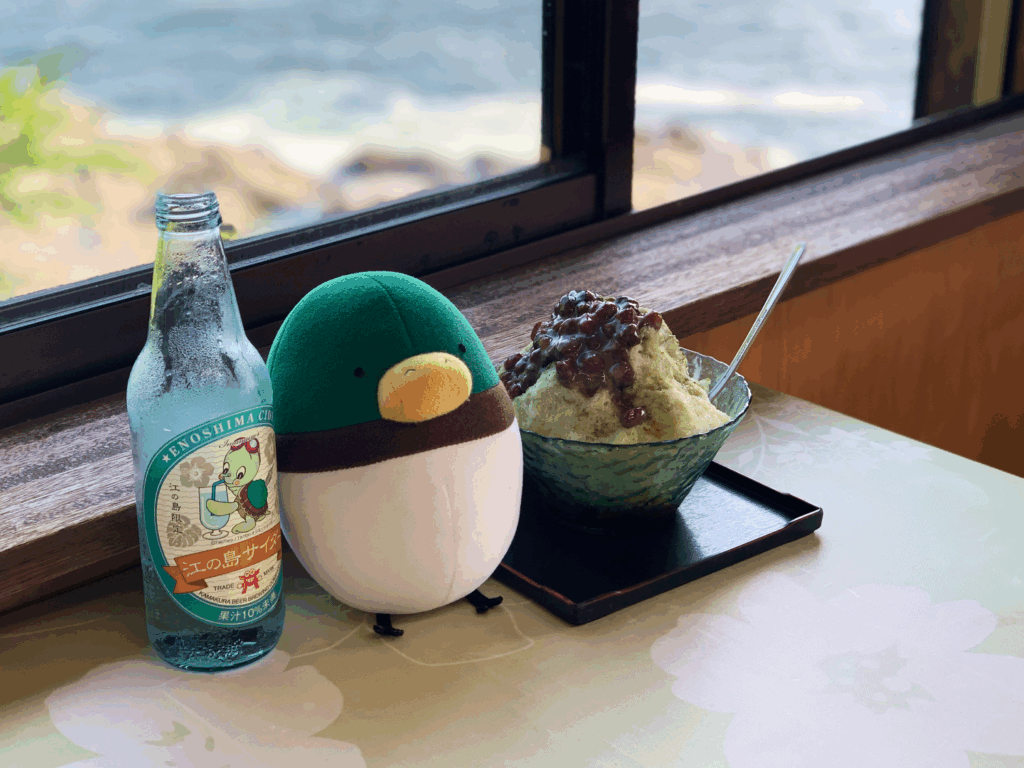
Turning What the Eyes See and Feel Into Art
Staying true to your title as a “traveling illustrator,” many of your works draw inspiration from real places. How do you choose which locations to depict?
Sake – I often turn to social media for inspiration. I bookmark places that catch my eye on Instagram, X, or Pinterest, and once I’ve settled on a destination, local followers will sometimes suggest hidden spots. When traveling to regional areas, I’ve even visited places I first discovered through local TV programs.
Many of your works focus on the “backside” of the city—the hidden places like back alleys and street corners.
Sake – Honestly, I just like those kinds of places. (laughs) I feel confident in expressing light, so I often choose scenes with strong contrasts—like sun-dappled streets or the ocean. At times, I exaggerate the highlights and colors to emphasize the play of light and shadow.
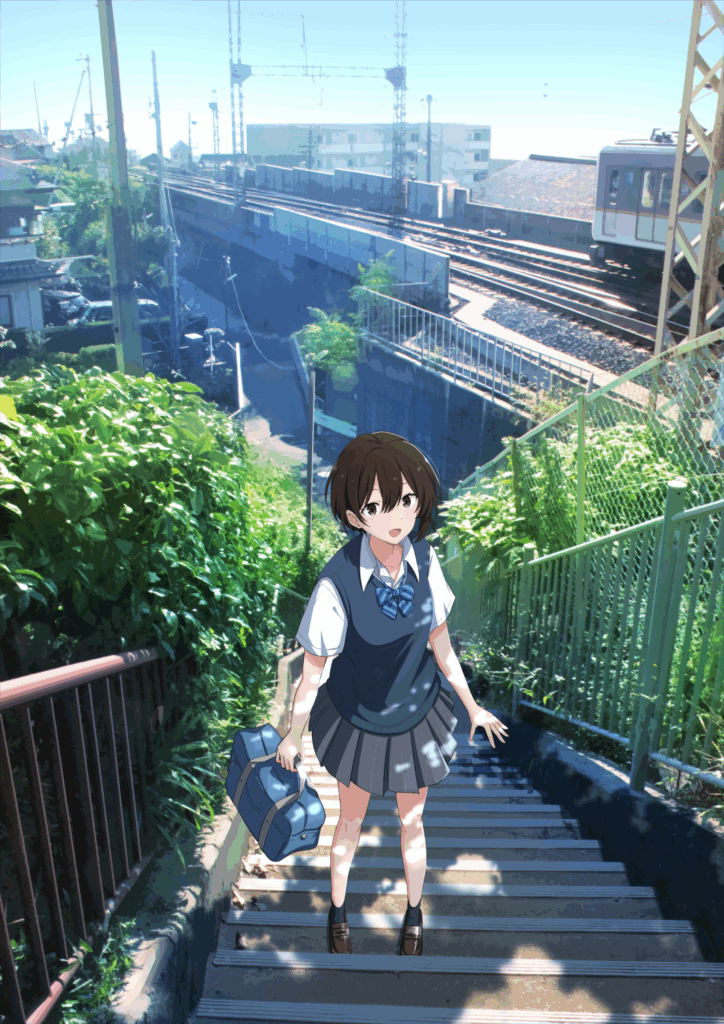
When working on commissions, I’m often asked to feature well-known landmarks. But in my personal projects, I try to capture scenes you’d only stumble upon by actually being there. Stairways are another favorite motif of mine—they make it easy to place characters within the composition and evoke the sense that something is just about to begin. Some fans have even managed to identify the exact locations I’ve drawn.
When I look at your work, I can’t help but want to visit those places myself!
Sake – Some fans even make “pilgrimages” to those places. One time, a fan actually organized a whole tour for me! (laughs) We visited various spots together and wrapped up the day by sharing a meal.
Being an Illustrator in the Age of AI
Could you tell us about your travel routine?
Sake – Not every trip, but I often begin by visiting the city’s main station. It gives me a sense of how vibrant the place is and what it’s known for. I don’t just want to draw—I want to experience the city itself. So I also make a point of trying the local food and visiting its landmarks.
The meticulous landscapes are one of the real hallmarks of your work. How do you go about creating them?
Sake – I usually begin with photos I’ve taken on my travels, which I edit before adding lines and color. From there, I’ll exaggerate certain elements or downplay details that might feel distracting. The way I process the original photo can completely change the atmosphere of the piece. Once, I wanted to illustrate a place in a different season, but when I visited it was covered in snow. Reimagining the scenery without snow while painting was quite a challenge. (laughs)
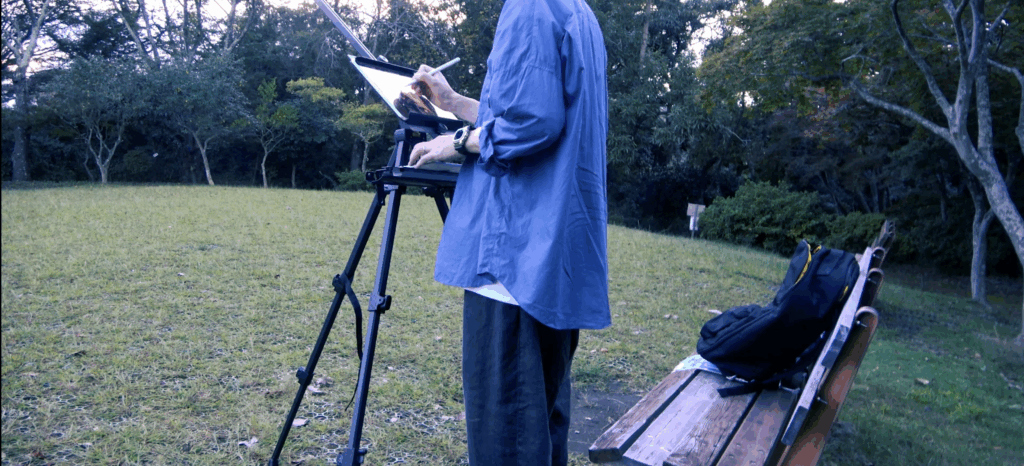
The contrast between your sweeping landscapes and the schoolgirl characters is especially striking.
Sake – Sometimes I change the characters depending on my mood. At one point, I even created a storyline where the character travels to different destinations. Honestly, when I first started posting on social media, I mainly wanted to practice drawing landscapes. I figured if I kept the character design consistent, I’d have more freedom to draw scenery! (laughs) But I realized that having a character in the piece also makes more people stop and look. Now, both elements feel essential.
Recently, AI-generated illustrations have been gaining popularity. How do you see this trend?
Sake – I think some in the industry feel uneasy about AI art, and I can understand that sentiment myself. Still, I believe it’s an unstoppable part of the times. Of course, it would be dishonest to say I don’t feel any sense of crisis, since some jobs are already being lost. But I try to use the technology in ways that support my work while striving to create things that AI cannot replace. At the same time, issues like copyright infringement are becoming more serious, so I think stronger legal frameworks and regulations are necessary.
Sakeharasu began his career drawing illustrations for an izakaya. In this interview, he’s shared behind-the-scenes stories of his creative process and his thoughts on surviving as an artist in the age of AI. In Part 2, we’ll turn to a more personal side—from his vision of the future of society to his passion for horror films.


